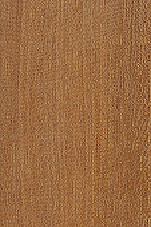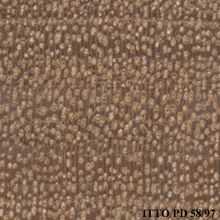
HALMALILLE WOOD/TRINCOMALI WOOD (Berrya cordifolia)
Trade Name
Halmalille wood/Trincomali wood
Scientific Name
Berrya cordifolia (Willd.) Burret
Family
TILIACEAE
Common Names
Trincomalee wood; Trincomalee; Tricomale; Thirukkanamallay; Sarala devadaru; Petwun; Pakpak-balang; Mai-tonghu; Liengmun; Liangman; Ketapang; Kambamaram; Hpekwoon; Halmillila; Halmilla; Dok leung; Chevandelai; Chavandalai; Anobrang; Liang (Thailand); Mai-long (Myanmar); Malibayo (Philippines); Trincomali wood; Halmalille wood
Scientific Name Synonyms
Espera cordifolia Willd.; Berrya ammonilla Roxb.
Description Of The Tree
Botanical Description
It is a deciduous, small to medium-sized tree up 30 m tall. The bole is frequently crooked in Malaysia but apparently better shaped in India and Vietnam. It is branchless for up to 15 m, up to 80 cm in diameter, fluted at base or with low buttresses.
Natural Habitat
It is usually found scattered in deciduous primary forests, sometimes also in secondary forests, up to 1,000 m of altitude. It tolerates poor drainage, but is sensitive to drought.
Natural Distribution
It occurs from India region to Myanmar, Laos, Indo-China, Sri Lanka, Andaman islands and Philippines.
Wood Identification
Anatomic Description Of Wood
Wood diffuse porous. Occasionally vessels in radial multiples of 4 or more common. Occasionally tyloses common. Vessels per mm2 5 to 20. Simple perforation plates. Intervessel pits small, 7 micras or less. Axial parenchyma in marginal or in seemingly marginal bands. Apotracheal axial parenchyma diffuse and/or diffuse in aggregates. Axial parenchyma confluent. Prismatic crystals in non-chambered axial parenchyma cells. 3 to 4 cells per parenchyma strand. 5 to 8 c 4 to 10 rays per mm (medium). Rays storied. Larger rays more than 4 seriate. Prismatic crystals in the ray cells. Body ray cells procumbent with one row of upright and/or square marginal cells (Kribs-III). Fibers with simple to minutely bordered pits.
-
 Wood Macro Photo Radial Plane
Wood Macro Photo Radial Plane
-
 Wood Micro Photo Of Transversal Section
Wood Micro Photo Of Transversal Section
Availability
Cites Status
Unrestricted
General Wood Description
Odor
It has pungent odor when freshly sawn.
Color
The sapwood is whitish to pale brown, distinct. The heartwood is dark red to brown, with darker streaks.
COLOR INDEX (1=Black, 7=Light yellow,white)
4
Grain
The grain is straight or shallowly interlocked.
Texture
Texture is mostly fine to medium.
Natural Durability
It is rated as highly resistant to attack by decay and insects.
Natural durability index (1= Very high durability, 7=Vey low durability)
2
Resistance To Impregnation
Heartwood is extremely resistant to impregnation but does not appear to require any treatment for most practical purposes.
Wood Physical Properties
Basic Density or Specific Gravity (O.D. weight/vol. green) (g/cm³)
0.83
Air-dry Density (Weight and volume at 12%MC) (g/cm³)
0.96
Total shrinkage Tangential (Saturated to 0%MC) (%)
9.5
Total shrinkage Radial (Saturated to 0%MC) (%)
5.5
Dimensional stability ratio (Total Tangential Shrinkage %/Total Radial Shrinkage %)
1.7
Wood Chemical Properties
Wood Mechanical Properties
Bending Strength (MOR),12%MC (kgf/cm²)
1192
Stiffness (MOE) 12%MC (kgf/cm²)
146991
Compression parallel to fiber 12%MC (kgf/cm²)
560
Workability
Sawing
Sawing of this species is difficult.
Machining
Machining of this species is reported to be easy.
Turning
30
Gluing
This species is difficult to glue.
Finishing
It is easy to finish.
Polishing
This species is reported to be easy to polish.
REFERENCED USES
End Uses Summary
EXTERIOR GENERAL, poles, crossties, HOUSING GENERAL, flooring, FURNITURE AND CABINETS, TURNING, BENDING, SPORTS, TOOLS, tool handles, agricultural tools, PACKING, CONTAINERS, truck bodies, truck flooring, NAVAL CONSTRUCTION, boats, OTHER AND MUSICAL INSTRUMENTS, handicrafts
Exterior General
- 1 - Tabela de resultados de ensaios fisicos e mecanicos
Poles
- 3 - Estudo dendrologico e determinacao das caracteristicas fisicas e mecanicas do genipapo (Genipa americana)
Crossties
- 8 - Maderas latinoamericas. III, Podocarpus standleyi ,Podocarpus oleifolius, Drims granadensis, Magnolia poasana y Didymopanax pittieri
General Housing
- 10 - Silica in Timbers
Flooring
- 14 - Handbook of Hardwoods
Furniture Cabinets
- 21 - Tropical timbers of the world. Part III-Southeast Asian and Oceanian Species.
Turning
- 30 - Embassy of Honduras in Japan
Bending
- 35 - Embassy of Myanmar in Japan
Sports
- 38 - Annual Review and Assessment of the World Timber Situation 1998-ITTO
Tools
- 42 - Utilización Industrial de Nuevas Especies Forestales en el Perú.
Tool Handles
- 43 - Maderas de Bolivia (Características y Usos de 55 Maderas Tropicales)
Agricultural Tools
- 44 - Atlas of Peruvian Woods
Packing
- 45 - Recopilación y Análisis de Estudios Tecnológicos de Maderas Peruanas
Truck Body
- 53 - Timbers of the New World
Truck Flooring
- 54 - Bulletin of the Government Forest Experiment Station N.157: Identification of Tropical Woods
Shipbuilding
- 55 - Tropical Timber Atlas of Latin America
Boats
- 56 - Manual de Identificación de Especies Forestales de la Subregión Andina.
Handcraft
- 66 - Maderas latinoamericanas. VII. Caracteristicas anatomicas. propiedades fisicomecanicas, de secado, y tratabilidad de la madera juvenil de Cordia alliodora (Ruiz & Pav. Oken.)
Please Provide Information To View Producer Information